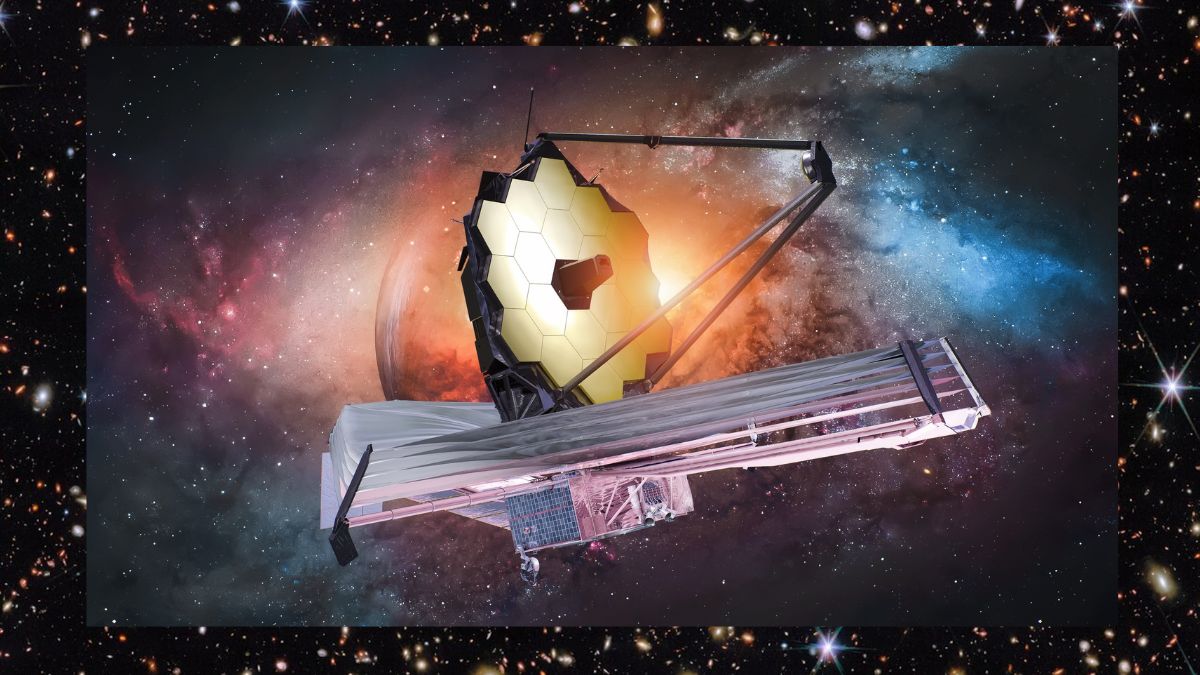The James Webb Space Telescope (JWST) stands as the most powerful space observatory ever built. Designed by NASA with contributions from the European and Canadian space agencies, JWST allows astronomers to explore the earliest stages of the universe. It reveals how galaxies formed, how stars were born, and what the atmospheres of far-off exoplanets contain. In this article, we’ll walk you through its purpose, major components, and landmark discoveries.
What Is the Purpose of the James Webb Telescope?
Unlike its predecessor, the Hubble Space Telescope, JWST observes the universe in infrared light. This ability allows it to see through dust clouds and observe extremely distant and faint objects.
The Telescope’s Main Goals:
- It aims to detect the first galaxies formed after the Big Bang.
- It observes how galaxies and stars evolve over time.
- It examines exoplanet atmospheres, searching for signs of habitability.
- It helps scientists understand cosmic structures such as black holes and dark matter.
Because of its design, JWST can look billions of years into the past, offering a clearer view of our universe’s history.
Read More: James Webb Telescope’s Map of the Universe – A Cosmic Breakthrough
Key Components of the JWST
JWST relies on several advanced parts that work together to achieve its scientific goals.
| Component | Purpose |
|---|---|
| Primary Mirror | A 6.5-meter gold-coated mirror made up of 18 segments. It collects faint infrared light from faraway galaxies. |
| Sunshield | A five-layer shield, each as large as a tennis court. It protects the telescope from heat and sunlight. |
| Instruments | NIRCam, NIRSpec, MIRI, and FGS/NIRISS, which capture images and measure light from deep space. |
| Orbit Point | It operates at Lagrange Point L2, about 1.5 million kilometers from Earth. |
| Launch System | Launched aboard the Ariane 5 rocket in December 2021. |
Each component plays a critical role in helping JWST achieve unmatched sensitivity and precision.
Discoveries That Changed Science
Since 2022, JWST has produced some of the most important findings in modern astronomy.
1. Earliest Galaxies Ever Observed
JWST has detected galaxies formed just 325 to 400 million years after the Big Bang. These galaxies appear earlier than expected, pushing scientists to rethink how galaxies form.
2. Atmospheres of Exoplanets
For the first time, astronomers have identified methane, carbon dioxide, and even sand-like clouds in the atmospheres of distant planets. This information could lead to the discovery of habitable worlds.
3. Cosmic Web and Gravitational Lensing
JWST has revealed the cosmic web—the universe’s large-scale structure—and used gravitational lensing to magnify distant objects, including ancient quasars.
4. Black Holes and Dark Matter
The telescope discovered early supermassive black holes and provided data to study dark matter and the universe’s expansion.
Read More: Pakistan Set to Send Its First Astronaut to Space Soon
Why JWST Is a Breakthrough
Here’s what makes the telescope truly revolutionary:
- It observes infrared light, allowing scientists to see beyond what visible light reveals.
- Its high sensitivity uncovers incredibly faint and distant objects.
- The telescope operates at very low temperatures, enhancing its ability to detect infrared signals.
- It supports a wide range of missions, from observing baby stars to scanning planets for signs of life.
Thanks to these advantages, JWST is expected to answer some of science’s biggest questions.
What Lies Ahead for JWST?
As it enters its fourth research cycle, the telescope will explore even more:
- How stars and planets form
- The birth of galaxies
- Signs of life in exoplanets
- Black hole behavior and cosmic evolution
JWST has already scheduled over 8,500 observation hours, and its mission could last for at least 10 years, if not more.
Conclusion
The James Webb Space Telescope is far more than a replacement for Hubble. It is humanity’s most powerful tool for peering into the depths of space and time. Its unmatched sensitivity and cutting-edge design allow it to answer fundamental questions about the origins of stars, galaxies, and life itself. Stay tuned with Bloom Pakistan
Read More: Why United Chose SpaceX’s Starlink to Power its Free Wi-Fi









